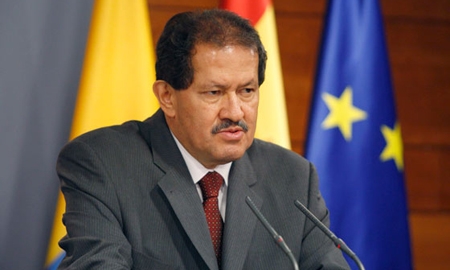In 2011, Colombia enjoyed an economic boom, with a GDP growth rate of 5.5%, an unemployment rate of 9%, and inflation at 3.7%. “We have a projection for the coming years for GDP to be growing at an average annual rate of 5.5%, as we did in 2011. In 2010, our growth was 4.6% and we are optimistic that in 2012 our GDP may even grow by 6,” says Angelino Garzon,
Vice President of Colombia. “We also forecast a strong fiscal policy further improving our tax revenues. The budget for 2012 is estimated at about $90 billion. We have also projected to continue increasing exports; the year 2011 closed at about $55 billion, with a very diversified trade agenda.”
Increasing trade is being taken very seriously by the government. Last year, free trade agreements (FTAs) with Canada and Switzerland came into effect, and the US government endorsed an FTA five years ago. Others currently under negotiation include those with Turkey, Korea, Japan, Indonesia, China and Russia. The government is also working on an FTA with the European Union that will hopefully take effect by the end of this year and open up Colombia’s access to around half a billion EU customers.
“We have always reiterated that this is a trade agreement that is best for the economy and employment in both the European Union and Colombia. This is not about favors: the European Union is not doing Colombia a favor, it is a trade agreement that benefits both parties,” says Mr Garzon. “Equally, in each of the agreements with Canada, the US and the EU, there is a preferential clause regarding the importance of the promotion and respect of human rights, including labor rights, union freedoms, and environmental issues. We have signed it and we agree to it, as we believe that this a reflection of how it must be in the international community. Just as trade and commerce have been globalized, so have human rights. If the employer is doing well, the worker should also be doing well well. Business and international trade should be an important factor in strengthening human rights.”
The government recently reaffirmed its stance that the strengthening of cooperation between Colombia and Europe, especially Germany, should be done with an increasingly holistic view, cooperating for economic and social development that will contribute to respect for human rights and the environment, and cooperation that stimulates the development of science, technology, and innovation. Its keenness to spur greater employment and life opportunities for Colombia’s youth is a sentiment echoed by countries worldwide.
In January, speaking at the panel on “Averting a lost generation” during the World Economic Forum in Davos, Director-General of the International Labour Organisation (ILO) Juan Somavia called for a new policy paradigm to promote inclusive job-rich growth for the almost 75 million unemployed youth aged 15-24 worldwide. Mr. Somavia said the youth employment crisis had reached unprecedented and intolerable dimensions, with four out of 10 unemployed in the world being either a young woman or man.
Mr Garzon comments: “Globally, there are 215 million working children, of whom 22 000 die annually from causes of work. This is a humanitarian tragedy and a real cause for shame for all governments and societies around the world. It is absurd that there are 215 million children working, and at the same time there are millions of unemployed adults. The world of children should revolve around study, recreation, culture, and wellbeing. With children you always have to talk about the present; tomorrow is too late. There is a struggle for youth employment, which has to be closely related to abolishing child labor forever.
“There are other challenges for the ILO, such as how to make companies productive and competitive while at the same time sustainable. Also, how to help companies develop social responsibility practices, such as contributing to employment today that is decent, where the integral social security implicit, and how to contribute to women’s and youth employment. In addition, how to contribute to the protection of the rights of migrant workers, or counteract the negative effects of climate change on the world of work, for example floods that cause the closure of companies in industry and in agriculture.
“Further challenges include how to improve people’s professional and technical skills in a more competitive world, and how to contribute to the great debate of how free trade agreements should be closely related to policies of corporate social responsibility and protection of human rights, labor, and the environment.”
The Vice President believes that with closer international collaboration and greater joint efforts, these challenges can be met

0 COMMENTS